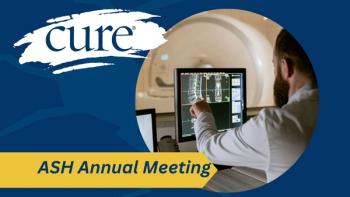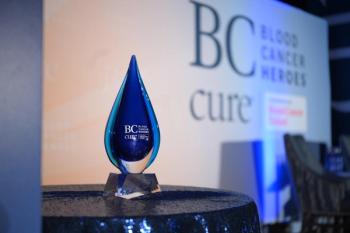
3D Printing May Shape the Future of Breast Reconstruction

Key Takeaways
- 3D printing and bioprinting may enhance breast reconstruction by reducing risks like infection and implant malposition, offering safer and more personalized options.
- Empowering patients with choices in reconstruction is crucial, and early consultation with a plastic surgeon is recommended to fully understand available options.
Dr. Evan Garfein explains how 3D printing and tissue-engineered implants could make breast reconstruction safer and less taxing on the body.
Dr. Evan Garfein, chief of plastic and reconstructive surgery at Montefiore, shares how 3D printing and tissue-engineered technologies may enhance future breast reconstruction options,
While current approaches using implants or a patient’s own tissue already allow for personalized care, Garfein said the next generation of bioprinted implants could help reduce risks like infection and implant malposition — making reconstruction safer and “cheaper” in terms of the body’s recovery cost.
CURE: Can you discuss how you see 3D printing and tissue-engineered alternatives shaping the future of breast reconstruction?
Garfein: One of my favorite parts of a consultation with a woman who’s on this journey (often for the first time) is when I tell her, “You can take a deep breath and let it out.” This is the first part of the journey where you can be the captain of the ship. There are parts of this journey that are “have to,” but this is not one of them. You don’t have to get reconstruction. The simplest reconstruction is no reconstruction, closing the mastectomy skin flaps, being done, and moving on. If you need radiation or chemotherapy, that’s okay, but that part of your treatment is done.
There’s something liberating for patients going through a difficult, “have to” process to suddenly find an area of “want to.” I love that about what I do. Reconstruction gives patients a sense of control in a situation where they often feel they have none.
3D printing and bioprinting are exciting future adjuncts to what we already do quite well. Today, we can reconstruct a breast using implants or a patient’s own skin and fat from different parts of the body, depending on their anatomy and goals. Having options matters — if you only have one, it’s not much of a choice. Fortunately, we can now offer many different ways to reconstruct a breast after mastectomy.
Our goal in reconstruction is to build something that looks and feels like a natural breast. There’s no functional purpose beyond that. In plastic surgery, we talk about form and function, and in this case, the function is the form. Ideally, we want to make every option better — and what I call “cheaper” for the patient.
When I say “cheap” or “expensive,” I don’t mean financially. I mean in terms of what it costs the body, time, or risk. A more complex reconstruction is more “expensive” because it carries higher risk or requires a longer recovery. For some women, that’s worth it. For others, a simpler, “cheaper” option like an implant is best.
If we can create bioprinted reconstructive or aesthetic implants that eliminate some of the risks of silicone — like infection, capsular contracture, or implant malposition — that would be even better. That’s where I see the future heading, and it’s something we’re actively working toward.
What advice would you give patients navigating reconstruction options to feel more empowered and informed throughout the process?
That’s a great question. There’s not a week that goes by that I don’t get a call or an email from someone — a friend of my wife’s, a colleague’s acquaintance, or someone from out of state — who says, “Someone close to me was just diagnosed with breast cancer. Will you talk to her?” The answer is always yes.
About 90% of the time, wherever they are in the process, they haven’t spoken to a plastic surgeon yet. I always tell them: you need to. That conversation will inform every other discussion — with the radiation oncologist, breast surgeon, or medical oncologist. Even if the patient ultimately decides, “I don’t want reconstruction,” it’s important that she makes that choice with full understanding of her options.
For instance, a breast surgeon might recommend a lumpectomy, explaining that the cure rate is the same as a mastectomy — and that’s true. But the aesthetic outcome can vary dramatically, depending on breast size and tumor location. I often explain it this way: taking a golf ball out of a cantaloupe might go unnoticed, but taking one out of a lemon or an orange will leave a mark.
That’s why meeting with a plastic surgeon early is key. We can help patients understand all their choices — lumpectomy with reconstruction, mastectomy with reconstruction, bilateral reconstruction, or no reconstruction at all — and talk through what matters most: recovery time, complication risks, or life events coming up.
My biggest pieces of advice are:
Assemble your full team early. Talk to a plastic surgeon as part of that team.
Get a second opinion. I love second opinions. If your surgeon discourages you from getting one, you definitely should.
Know your options. Understand the pros and cons of each path before deciding.
Many patients wonder if it’s too late to pursue breast reconstruction years after a mastectomy. What should they know about timing and options?
Something not everyone realizes is that there’s no expiration date on reconstruction. I sometimes see patients referred to me 11 years after a mastectomy who think it’s too late. It’s not.
Even if you’ve been treated and cured years ago, you can still pursue reconstruction if you’re unhappy with your appearance. It’s still covered, and it’s still possible. So don’t feel like you missed your opportunity — you don’t have to live the rest of your life in a way that makes you unhappy.
Transcript has been edited for clarity and conciseness.
For more news on cancer updates, research and education,





